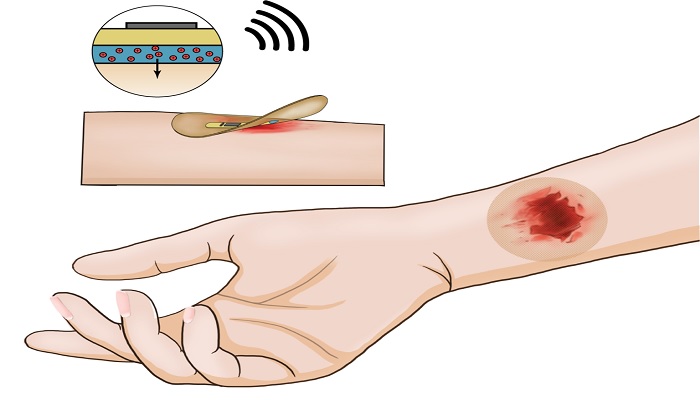[ad_1]
The smart bandage developed by researchers at Stanford University could be another medical breakthrough in an emerging field of medicine. merge Health and technology.
Experts claim that their new invention is able to monitor wounds and also provide treatment. Serious wound can heal 25% faster than normal bandage.
The smart bandage can be especially useful for those who are Diabetic And you need to treat foot ulcers quickly. These sores last for months and the Smart Bandage can make health easier with faster healing and fewer dressing stages. The bandage also repairs tissue because it combines electrical stimulation with biosensors. So, the people who have it Chronic injuries You can benefit greatly from the latest technological innovations in the field of health.
Not only does it help the wound, but the bandage is “smart” enough to also work on removing scars like magic. It does this by increasing blood flow to the site of the injury. With its ability to detect temperature, it can identify problems such as inflammation and infection. The bandage ends up using the CPU to deliver more electrical stimulation.
Experts tested a miniature prototype on mice. They tracked all the data directly on the phone, which means the bandage is wireless, which makes it even more convenient.
“While closing a wound, the smart bandage protects while it heals,” said author Yuanwen Jiang, a postdoctoral researcher in the lab of Zhenan Bao, KK Lee Professor of Chemical Engineering at Stanford School of Engineering, in a media release. .
But it is not a passive tool. It is a powerful healing device that could change standards of care in the treatment of chronic wounds.”
The invention, as described in the journal Nature Biotechnology, appears to have arrived in the year 2022 of the future with its electronic layer only 100 microns thick, roughly the size of a human hair. This layer contains the radio antenna, memory, microcontroller, and electrocatalyst, among other components.
To deliver electrical stimulation, the pad contains a skin-like hydrogel that collects biosensor data. The stretchy gel also contains a light adhesive to help the bandage adhere to the skin and retract easily when needed. However, it must be heated to 104 degrees Fahrenheit, which is slightly higher than the temperature of the human body, for it to be removed without harm.
“Across preclinical wound models in mice, the treatment group healed 25% more quickly and with a 50% improvement in skin remodeling,” Professor Jiang was quoted as saying. Coins.
“This was compared with controls. Furthermore, we observed activation of pro-regenerative genes in immune cell populations, which may promote healing.”
Artem Trusiuk, chief of surgery and professor of biomedical engineering at the University of Arizona, said the smart bandage is faster because of the stimulation and sensor that are in the same device.
“We believe it represents a new method that will enable novel biological discovery and explore previously difficult-to-test hypotheses about the human healing process.”
[ad_2]
Source link

